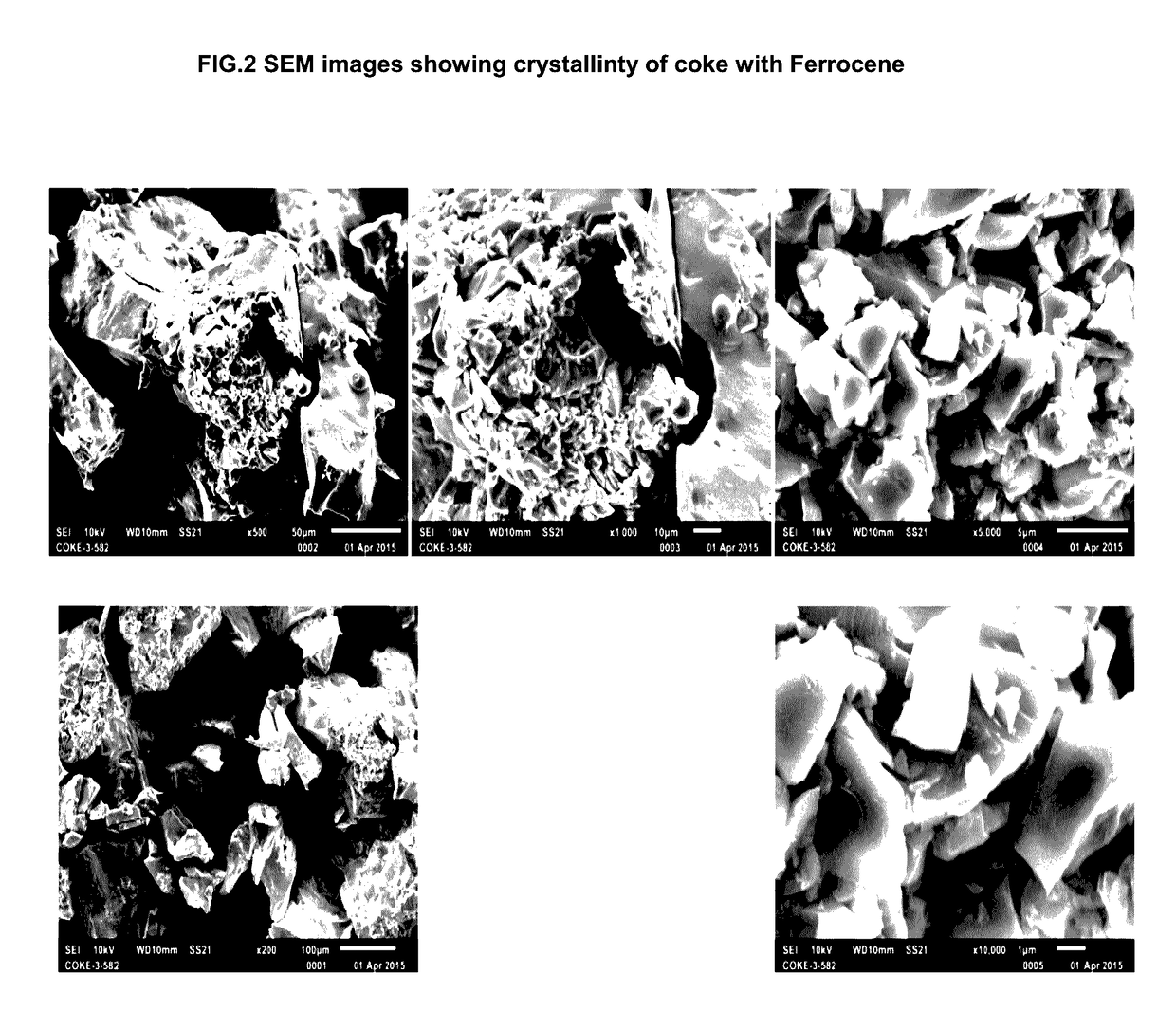Vacuum resid upgradation and graphite production
- Summary
- Abstract
- Description
- Claims
- Application Information
AI Technical Summary
Benefits of technology
Problems solved by technology
Method used
Image
Examples
example 1
[0046]A feed suitable for SHC is characterized in Table-1. This feed was used in all the examples:
TABLE 1Characteristics of Feed stockPropertiesFeed(VR)Specific gravity, g / cc1.020ICAP Metals (ppm)Mo2.8Ni49V174Fe8.5CCR24.79S, wt %5.4Total N, ppm1400Heptane insolubles, wt %8.55
example 2
[0047]An oil soluble Mo based organometallic compound which acts as a hydrogenation catalyst was used. The catalyst was pretreated by adding 2 wt % sulfiding agent relative to the feed and catalyst and heating the mixture to 220° C. at 30 bar and charging the heated mixture at high temperature and high velocity through a 10 meter long tube in a 1 litre autoclave reactor using hydrogen gas within 15 minutes to activate the catalyst before heating the mixture to reaction temperature in the autoclave. In a typical experiment, 300 grams of vacuum resid of Example 1 was charged in a 1 litre autoclave with the catalyst concentration of 660 and 165 ppm on metal basis. In the example cited in Table 2, the autoclave was heated for 120 minutes at 180 bar at operation temperature. Hydrogen was continuously added through a sparger and passed through the reactor continuously at a rate of 350 Standard Litre Per Hour (SLPH) and removed through a back pressure valve to maintain pressure. The hydrog...
example 3
[0048]An oil soluble organometallic compound i.e. ferrocene which acts as a hydrogenation catalyst was used. The catalyst was pretreated by adding 2 wt % sulfiding agent relative to the feed and catalyst and heating the mixture to 220° C. at 30 bar and charging the heated mixture at high temperature and high velocity through a 10 meter long tube in a 1 litre autoclave reactor using hydrogen gas within 15 minutes to activate the catalyst before heating the mixture to reaction temperature in the autoclave. In a typical experiment, 300 grams of vacuum resid of Example 1 was charged in a 1 litre autoclave with the catalyst concentration of 330 and 660 ppm on metal basis. In the example cited in Table 2, the autoclave was heated for 120 minutes at 180 bar at operation temperature. Hydrogen was continuously added through a sparger and passed through the reactor continuously at a rate of 350 SLPH and removed through a back pressure valve to maintain pressure. The hydrogen stripped out the ...
PUM
| Property | Measurement | Unit |
|---|---|---|
| Temperature | aaaaa | aaaaa |
| Temperature | aaaaa | aaaaa |
| Temperature | aaaaa | aaaaa |
Abstract
Description
Claims
Application Information
 Login to View More
Login to View More - R&D
- Intellectual Property
- Life Sciences
- Materials
- Tech Scout
- Unparalleled Data Quality
- Higher Quality Content
- 60% Fewer Hallucinations
Browse by: Latest US Patents, China's latest patents, Technical Efficacy Thesaurus, Application Domain, Technology Topic, Popular Technical Reports.
© 2025 PatSnap. All rights reserved.Legal|Privacy policy|Modern Slavery Act Transparency Statement|Sitemap|About US| Contact US: help@patsnap.com



